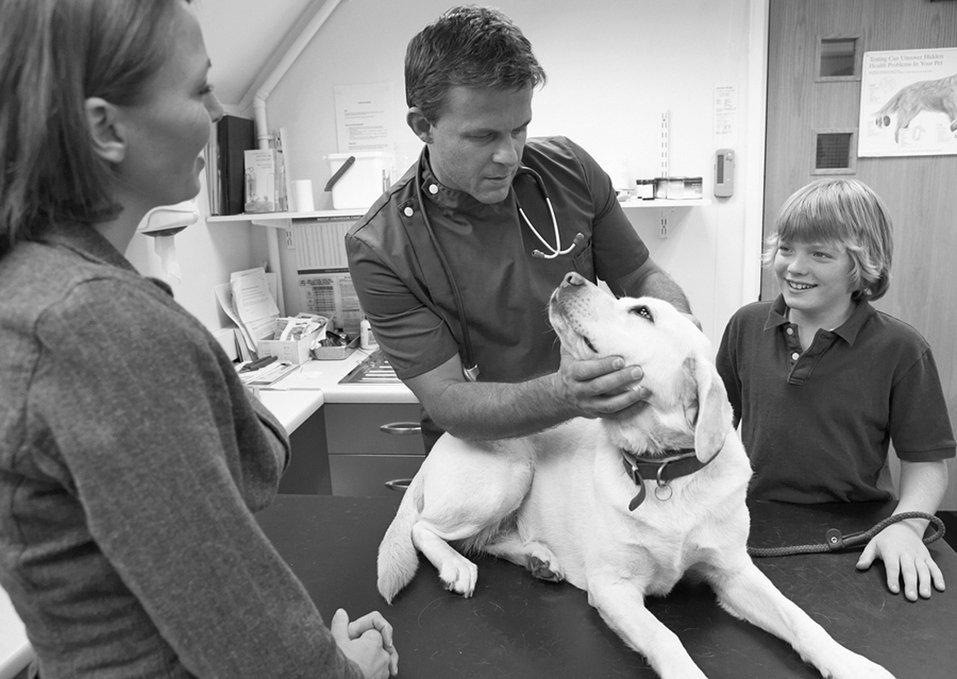For the better part of a century, the three mainstays of treatment for cancer, in both animals and people, have been surgery, radiation, and chemotherapy. Now a new cancer therapy promises to replace chemotherapy and its sledgehammer effects on the body and holds promise as an even better eradicator of malignant tumors.
Bigstock

Chemo has its own place in cancer therapy. While surgery and radiation are used to treat cancer in a single spot, chemotherapy has been the modality of choice for attacking cancers that have spread throughout the body, either because it’s their nature to take hold in several sites at once (as is the case with lymphoma) or because they have metastasized from their original site (osteosarcoma, or bone cancer, comes to mind). Unfortunately, chemotherapy is a kind of “blunt instrument that hammers away at every cancer through the same basic mechanism and also hammers away at normal, healthy cells,” says Your Dog editor-in-chief John Berg, DVM, who specializes in cancer from the surgery side.
The way it works, he says, is by “messing up” the DNA of rapidly dividing cells and thereby killing them off because they can no longer engage in the genetic signaling that causes them to multiply. Since cancer cells are among the types of cells that divide rapidly, they make a perfect chemotherapy target. The problem, Dr. Berg points out, is that because chemotherapy works on all rapidly dividing cells in a dog’s (or person’s) body, it also destroys other fast-multiplying cell sets — those in the lining of the gastrointestinal tract, for instance, along with those of the hair follicles. That’s why many people treated with chemo become very nauseated — the GI tract becomes compromised as a result of the cell death there — and lose hair, too. Chemotherapy also attacks the very rapidly dividing cells in the bone marrow, where the white blood cells that fight infection are made, leaving the patient vulnerable to illnesses to which he would otherwise have an easier time mounting a defense.
The negative effects of chemotherapy tend to be much worse in people than in dogs. It’s dose-related. In people, the goal of treatment is generally to extend life as long as possible, so they are administered as much chemotherapy drugs as they can handle. As a species, we are generally willing to accept the often debilitating effects of full-force chemo so that it can potentially buy us years, even decades, of life.
Bigstock

But dog owners generally feel they don’t have the ethical right to make a dog feel extremely ill for three to four months with ultra-strong chemotherapy treatment that might buy their pet only a few months more than he would get with a moderate dose. Animals don’t live as long as we do, after all, and often get cancer when they are older and don’t have many years left, anyway. So dogs tend to receive only enough chemo simply to keep the cancer, and the pain it causes, at bay for as long as possible — in the vicinity of six months to a year and a half. That’s why dogs on chemo usually don’t become nauseated or infection prone. Also, most dogs don’t lose hair, because their hair is not continuously growing, and so the follicles are less likely to be damaged. The exception is breeds with continuously growing hair, such as poodles.
Still, healthy cells in a dog do get destroyed. And the toxic effects of chemo on healthy body cells that happen to divide rapidly are particularly unfortunate because, says Dr. Berg, “if we could give doses twice as large, we could probably cure more cancers, in people as well as in dogs. There’s a direct relationship between how much chemo is given and the degree of the cancer-killing response. It’s the dose-limiting toxicity that stands in our way. We’ve kind of hit a wall with what we can accomplish with standard chemo.” But newer drugs that are coming to market may be able to attack cancer in a more body-saving way.
Targeted Molecular Therapy for Dogs
A category of drug that goes under the broad heading of “targeted molecular therapy” is showing great promise as a cancer fighter. It is being investigated in major scientific laboratories and, in some instances, is already being used to treat both dogs and people. Unlike chemotherapy drugs, which attack rapidly dividing cells whether they’re cancerous or not, this newer class of drugs interferes with cancer cells’ internal signaling mechanisms for cell division and proliferation.
Consider that cancer is a disease of unregulated cell division. One of the ways cell division is triggered is through the signaling action of protein molecules on cancer cells called receptor tyrosine kinases. But new cancer-fighting drugs block the work of those molecules — hence the term “targeted molecular therapy” — and thereby block the message to the nuceli of cancer cells to begin the division and replication process. Without new cancer cells being created, the old ones simply die without any more young ones being created.
Two targeted molecular therapy drugs that have been approved to treat cancer in dogs are toceranib (Palladia) and masitinib (Kinavet). (The generic names of most of these types of drugs end in “ib, Dr. Berg says.) Both are approved right now for treating canine mast cell tumors. One of the most common cancers of dogs, mast cell cancer can be located at several sites in the body at once. That’s because mast cells, immune cells that mount responses to illness, occur in tissues throughout a dog’s body. Thus, when mast cell cancer strikes, often manifesting itself as deep bumps under the skin, it may not be enough to perform a surgery to excise the cancer at one particular spot or to employ radiation to kill cancer cells in one location. A drug to kill off cancer cells at various sites must be employed. The targeted molecular therapies do just that.
Even better, unlike most chemotherapeutic agents, they can be administered orally instead of by injection under the care of a doctor and therefore are given at home. Another bonus is that they seem to work without cancer becoming resistant to their effects, which is not the case with chemotherapeutic drugs. “Cancers have mechanisms for becoming resistant to chemotherapy,” Dr. Berg says. After a while, a cancer will ignore a chemotherapy drug’s efforts to kill its genetic material and keep it from replicating.
While toceranib and masitinib have been approved for use in treating mast cell tumors, they are also starting to be used “off label” by veterinary oncologists to treat several other canine cancers. “The scientific proof for other types of malignant tumors is yet to come,” Dr. Berg says, “but the hope is that these drugs will be effective for all kinds of tumors, not just mast cell tumors. Studies are underway right now.”
Hope for Dogs with Cancer
As research into targeted molecular therapies becomes more sophisticated, cancer investigators will be researching how to tweak the drugs’ action to the best effect, perhaps even tailor-making a drug to combat a particular cancer in a particular dog (or person). “The signaling pathways that tell the nucleus of a cell to divide in order for that cell to replicate itself are many, and varied,” Dr. Berg comments. “It’s a very complex network, and different cancers have different types of mutations and abnormalities when it comes to those signaling mechanisms. There are differences from cancer to cancer and even within any one particular type of cancer,” especially since a specific cancer may play out differently in one person’s body than another’s. But that’s where all the potential for targeted molecular therapies comes in, he says. As scientists gradually come to understand all of the gene mutations that can allow cancer cells to proliferate, they can develop a variety of drugs that can be combined to act directly on “the fingerprint of a particular cancer.
It will be a while before we really know whether that’s possible,” Dr. Berg adds, “but the concept is that an oncologist will be able to run a panel of tests to determine the exact genetic makeup of a cancer, then administer a drug or drugs that will best help kill off that cancer in a specific dog’s [or person’s] body.” It’s a micro-targeting, if you will, of already targeted therapies that don’t kill off both sick and healthy cells through the body like chemotherapy does. “I’m hoping that in 100 years, the chemotherapy era will be viewed as the Dark Ages approach to treating cancer,” Dr. Berg says.





